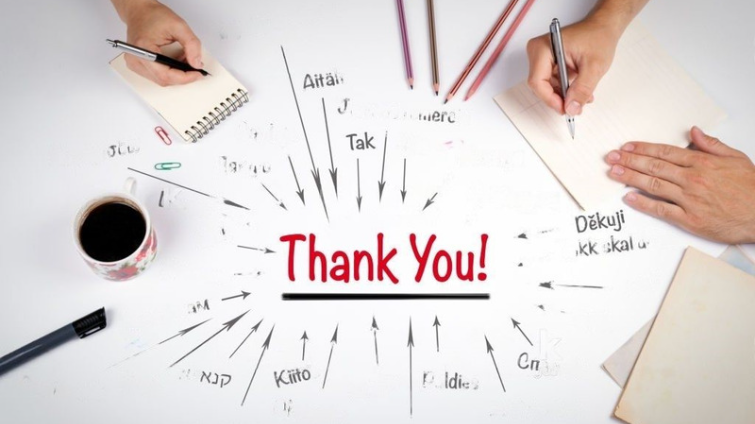How to Say “Please” and “Thank you” in the Dutch Language (Pronunciation with Audio)
Being able to say ‘please’ and ‘thank you’ when traveling or living in a foreign country always goes a long way. In Dutch, that’s alstublieft and dank je.
| Alstublieft | AHL-stu-BLEEFT | =Please |
| Dank je | DANK ya | =Thank you (neutral) |
However, like any language, different situations call for different ways to be polite. If you find yourself in The Netherlands or Belgium, here’s how you can handle professional and social settings in Dutch.”

Saying Thank You in Dutch
Dank je, translated literally, means the same as “thank you” Dank je, is used a lot in Dutch and is polite and neutral in its usage.
There are also other ways to say thanks in Dutch, depending on the situation that you are in. We’re going to take a look at :
- How To Thank In Dutch To Someone Older Or In A Formal Situation
- How To Say Thank You And Show Appreciation
- How To Say You’re Welcome In Dutch
- How to say Please In Dutch
How To Thank In Dutch To Someone Older Or In A Formal Situation
Depending on the person you are talking to, in Dutch, there are two forms of the singular ‘you’: je and U.
U is used as a polite form to strangers, superiors, and generally, to persons a generation older. Dutch society isn’t especially formal, so you don’t have to be overly polite in shops, restaurants, and similar environments. But if you are in a more formal situation, then say: Dank U which also means ‘Thank you‘
| Dank U | DANK Uh | =Thank you (formal) |

How To Say Thank You And Show Appreciation
To show that you are very appreciative of something and that you are thankful, we have a few options in Dutch.
First of all, you can say something that means the same as “Thanks a lot”. In Dutch that is: Dank je wel or Dank U wel. And remember the expression with “U” in it is more formal.
| Dank je wel | DANK ya well | =Thank you (neutral) |
| Dank U wel | DANK Uh well | =Thank you (formal) |
If you want to give someone a thoughtful thanks because someone has been very kind and, or helpful, you can say Hartelijk bedankt . The translation of this would be ‘A heartfelt thanks‘. For example, if you get lost in Amsterdam and a kind stranger helps you find your way and even calls a cab for you, you may want to give them a heartfelt thanks. Hartelijk bedankt literally translates as that.
| Hartelijk bedankt | HAR-Ta-luck buh-DANKT | = A heartfelt thanks /Thanks a lot |
If you just want to remember one simple word to express your Thanks and that you can use in any type of situation that word would be the same as the English “Thanks”. In Dutch we would say Bedankt which means thanks. Bedankt is good in almost any situation and a very versatile expression.
| Bedankt | buh-DANKT | = Thanks |

How to say you’re welcome in Dutch
The Dutch equivalent to “you’re welcome” has a bit of a different meaning, and it means more “No thanks necessary”. In Dutch, we would say “Geen Dank”. The phrase is used much less than in the English version. The Dutch would use a different expression in this situation more often and say “Graag gedaan” which means ‘my pleasure‘.
| Geen dank | Grheen DANK | = You’re welcome /No, thanks necessary |
| Graag gedaan | Ghraag Gedhaan | = My pleasure/ You’re welcome |
How to Say Please in Dutch
As mentioned at the beginning of the text, the Dutch word for please is alstublieft (AHL-stu-BLEEFT). You can use this word in the same way as in English. It can be used with any request, such as: “Een koffie, alstublieft” (“One coffee, please”). Substitute the word Koffie (Coffee) with any item of your choice in this useful Dutch expression to ask for things in shops, restaurants, cafes, etc.
The phrases alstublieft (and alsjeblieft) are also used when you offer someone an item; at a store, for example, the cashier will say: Alstublieft! as s/he hands you your receipt.
| Alstublieft | AHL-stu-BLEEFT | = Please (Formal) |
| Alsjeblieft | AHL-yu-BLEEFT | = Please (Neutral) |
| Een ____, alstublieft | Uhn ___, AHL-stu-BLEEFT | = A/One_____ ,Please |
Want to speak and read more Dutch?
Saying ‘please’ and ‘thank you’ in Dutch will help you to get around and talk to and connect with Dutch people. People will appreciate that you are making an effort to speak Dutch. If you want to learn more common words and expressions, then please check out our other posts.
Full course: Learn How you can “Greet Someone” and “Introduce Yourself” in Dutch
This amazing course will teach you, step by step: the words, phrases, pronunciation and practice your speaking, listening and reading.
Even if you have never spoken Dutch before + BONUS PDF Flashcards

If you are serious about learning Dutch and want to master the basics in a short amount of time, then check out our easy, fun, and fast Online Dutch course.
While it can take you a while to learn a language by searching things on google and using apps, – with this comprehensive language course, it will just take you a couple of weeks to see some real progress in your abilities. You will be surprised at how quickly you will be able to talk in Dutch and leave a good impression!
So if you are an absolute beginner and have very little knowledge of Dutch, or if you are going on a holiday, studying, or moving to the Netherlands or Belgium, you need to get practical use of basic Dutch as quickly as possible. Then this Learn Dutch course is the right choice for you!
After this course, you will be able to hold simple conversations using common Dutch phrases from daily life.
Make a start and LEARN DUTCH TODAY